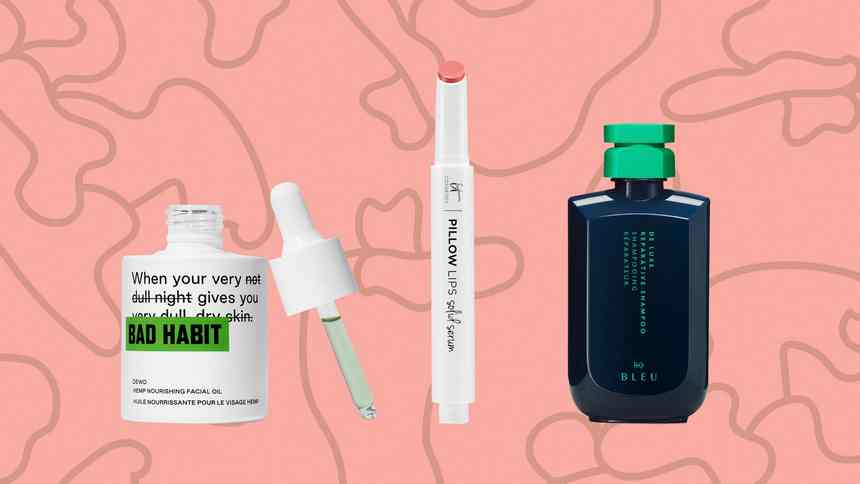When was the final time you had been totally current? Typically, the way in which we’ve structured fashionable life is in direct opposition to full presence in any given second. Alerts on our smartphones continuously take us out of no matter we’re doing. There may be at all times someplace else we now have to be or one thing else we now have to do. Even once we’re understanding, our minds is perhaps composing emails, creating to-do lists or choosing aside our final perceived social catastrophe.
Enter mindfulness, a staple of Japanese philosophy and extra generally identified by the Westernized variations of yoga and meditation. Mindfulness is now weaving its approach into psychotherapy as a instrument to fight nervousness and despair and assist navigate the inherently messy journey of life.
WHAT EXACTLY IS MINDFULNESS?
Mindfulness is the state of being deliberately centered on the current second in a nonjudgmental approach.
Mindfulness is the act of taking in data from the surroundings, together with your personal emotions, ideas or reactions with out attaching significance or a grand story to the data. Some Western practitioners, like F.M. Alexander, who created the Alexander Approach, described it as a 50/50: an entire rootedness in sense of self whereas taking in totally the outer world. Most easily, it means being awake, conscious and totally alive.
Even earlier than the invention of computer systems, smartphones and smartwatches, people have had bother staying current. So, Japanese philosophy sought to resolve this by creating practices that might firmly root people within the current. Anecdotally, these practices have been handed down by yoga and meditation.
THE PRACTICES
Yoga and meditation are the bodily embodiment of philosophical concepts, which, when actively utilized to scientific signs, is psychology. Beneath are workouts (aka interventions within the psychology world) that bolster mindfulness:
SQUARE BREATHING
Sitting neutrally or mendacity in savasana, flip your consideration to your breath. Observe the depth of the breath, the cadence, freedom or restriction in any specific areas. As soon as your consideration is linked along with your respiration, empty out the entire air in your physique. While you assume you’ve hit the underside, pause and push out any remaining air.
Maintain your breath on empty for 4 beats. Inhale utterly for 4 beats. Maintain your full breath for 4 beats. Exhale utterly for 4 beats. Proceed this sample for 3–5 minutes or as time permits. Acknowledge that ideas will come and go unrelated to the breath; allow them to. When your thoughts wanders away from the breath, gently name it again and decide up the place you left off.
THE BODY SCAN
This may be completed both mendacity in savasana or sitting neutrally in a chair. Connect with your breath by sq. respiration or by noticing the rhythm, depth and high quality of your respiration within the current second. Ranging from the information of your toes and dealing your approach up the physique, left and proper aspect, back and front aspect, describe the sensations in every a part of your physique. Does this a part of you are feeling sore or drained or tense? What does the material of your clothes really feel like towards your pores and skin? What’s the temperature of this a part of you? As factors of rigidity emerge, actively squeeze these muscle mass for five seconds, then launch. This encourages residual rigidity to soften away.
MINDFUL ROUTINE
Like a boxer wrapping their arms earlier than a combat or a yogi unrolling their mat and lighting their palo santo earlier than observe, all of us have routines that make us really feel like we’ve arrived. It is perhaps the way you begin your day or perhaps it’s your pre-running ritual. Maybe your ritual occurs simply earlier than you fall asleep. At any time when it occurs, take this ritual off of autopilot. Totally contain your self within the moment-to-moment expertise. Discover when your consideration wanders off of the ritual. Gently information your thoughts again to the now by rooting your self within the bodily sensations of the physique and breath. Come again to the exercise; dwell totally inside the sentiments and ideas it provokes.
THOUGHT AND FEELING JOURNAL
In fashionable life, we’re continuously bombarded with stimuli. Among the stimuli are nice and a few are disagreeable. A Thought and Feeling Journal acts as a approach so that you can acquire and retailer knowledge on how occasions illicit your emotional, psychological and bodily responses. As you catalog extra occasions, you’ll discover patterns. Consciousness of those routine patterns offers you the flexibility to decide on otherwise the following time. Not all ideas and emotions are info. Use this journal to assist differentiate emotions and ideas round an expertise from the reality of the expertise.
For every occasion you catalog, briefly describe the occasion and determine whether or not it was nice or disagreeable. What had been the bodily sensations? Describe the sentiments. What had been your ideas? Embrace high quality of thought as effectively (i.e., tempo, intonation, and many others).
THE 50/50
This train is finished along with your eyes open. As a lot as eyes-closed meditation will help us focus our intention inward, most of our life experiences occur with eyes open. This observe teaches us to remain linked to our entire selves whereas experiencing the skin world.
Standing or sitting in a spot of neutrality, floor your self within the your bodily expertise, beginning along with your breath. Discover it’s high quality and cadence. Hold your consciousness because it strikes by the physique, scan the psychological/emotional and bodily physique. What locations are sore/tight/tense? What locations are awake/alive/free? What different bodily sensations do you are feeling and the place? What about your coronary heart? How do you are feeling emotionally at present? What about your ideas? What’s their high quality? The place are they lingering?
Hold the entire data you’ve gained about the way in which you arrive within the current second. Hold this connection to your self. Permit 50 p.c of your consideration to soak up the surroundings: different individuals within the area, the colour of the partitions, the kind of furnishings, the sounds floating in from past the home windows and partitions. Discover how your physique/thoughts/coronary heart reply to the delicate shifts in your surroundings.
THE LOVING KINDNESS MEDITATION (METTA BHAVANA)
Sitting or mendacity in a cushty place, floor your self in your breath. Think about a glowing orb of sunshine within the coronary heart middle. Within the yogic custom, the guts is the middle of compassion and love. Think about these phrases, or ones just like them, emanating from this glowing orb:
Could I be completely happy and free.
Could I be freed from psychological struggling or misery.
Could I be freed from bodily ache and struggling.
Could I really feel secure and guarded.
- Think about an individual or group of individuals you take care of deeply. Genuinely repeat the meditation for this particular person (i.e., Could Susie be completely happy and free).
- Think about an individual or group of individuals you neither like nor dislike. Genuinely repeat the meditation for this particular person or group.
- Think about an individual or group of individuals you might be in battle with or strongly dislike. Genuinely repeat the meditation for this particular person or group.
THE ART OF LOW REACTIVITY
Medical psychology has been using the wave of mindfulness because the ‘80s. Therapists harnessed the ability of mindfulness to fight impulsivity, emotional reactivity, power stress, nervousness and despair in probably the most susceptible of populations: high-risk youth.
With a battery of mindfulness-based interventions (MBIs) out there, many group and particular person remedy plans embody Mindfulness Primarily based Stress Discount (MBSR) and Mindfulness Primarily based Cognitive Remedy (MBCT). Each MBSR and MBCT have been confirmed efficient remedy in scientific and non-clinical diagnoses. Psychologists checked out areas of psychological well being like cognitive and emotional reactivity, rumination, fear, psychological flexibility and self-compassion.
Our our bodies are hardwired to reply to stress. A little bit stress helps inspire us. An excessive amount of stress wreaks havoc on immune system features and effectively as psychological well-being. Consciousness of our routine patterning, when confronted with stress, offers us the choice to decide on otherwise. When confronted with a stressor a few of us have excessive reactivity and a few low. Consider cognitive and emotional reactivity because the irrational impulses we now have when confronted with destructive stimuli. The impulses to blow up or cry or connect private significance to the occasion in an excessive method are thought of extremely reactive. Alternatively, taking within the occasion with out permitting it to get beneath our pores and skin is low reactivity.
When the practices above are utilized to real-life conditions like getting rear-ended, lacking the practice by seconds, getting injured throughout a coaching session or having a horrible day at work, we now have a chance to reframe our notion and response. Within the yogic custom, we name the idea of non-reaction, generally defined as non-attachment to emotions or tales of significance we create, aparigraha. In any mindfulness observe, one of many key tenets is to note ideas and emotions with out being consumed by them. The tales we inform ourselves, significantly these surrounding our emotional expertise, have a tendency to hold unwarranted significance. Within the mindfulness practices, we study to soak up the data of the bodily, psychological and emotional reactions with out figuring out with them. Who we’re as individuals just isn’t outlined by each single thought or feeling we now have.
THE ABILITY TO FOCUS ON THE PRESENT
Nervousness is a product of residing in and worrying in regards to the future. It’s concern provoked by one thing that has not but occurred. Despair is exactly the other. Rumination, or obsessively reliving occasions from the previous, results in depressed temper. Mindfulness roots us firmly within the current. It presents perception into emotional reactions we now have to significantly irritating occasions, due to this fact permitting us to reframe our perceptions. After we observe non-attachment, ideas and emotions don’t essentially must be true. So usually our reminiscence or concern of the occasion is tightly wound with emotions and ideas that masquerade as info. With our newfound skill to watch thought and feeling, versus attaching to it, we unchain ourselves from our impulses and being aware beings.
Have you ever ever puzzled why yogis have the flexibility to “flow?” Mindfulness will increase emotional, cognitive and behavioral flexibility (if yoga is your mindfulness observe of alternative, then bodily flexibility, too.) Mounted patterning means an individual is unable to develop or change. Primarily, they’re “locked in” to the way in which they view the world. Versatile mindsets have the flexibility to soak up new data and develop or change from it. Mindfulness asks us to watch issues as they’re, not how we want or concern they’re. In doing so, we settle for actuality with out being restricted by expectations. Mindfulness exhibits us tips on how to take in data from the surroundings and study from it.
HAVING COMPASSION
The loving kindness meditation, specifically, cultivates optimistic feelings and compassion. Constructive feelings result in optimistic outcomes in social and psychological points of life. By genuinely wishing ourselves and others happiness and freedom, we study to have compassion for even the darkest components of our being. Compassion for making errors, for being human, finally bolsters our personal sense of value and worth.
THE BOTTOM LINE
Stress and nervousness are inevitabilities. They don’t have to regulate our lives. The instruments for navigating this messy and unpredictable journey with grace dwell with mindfulness practices. By incorporating mindfulness into our each day, we now have the flexibility to vary our relationship with stress and nervousness from impairing to motivating.









